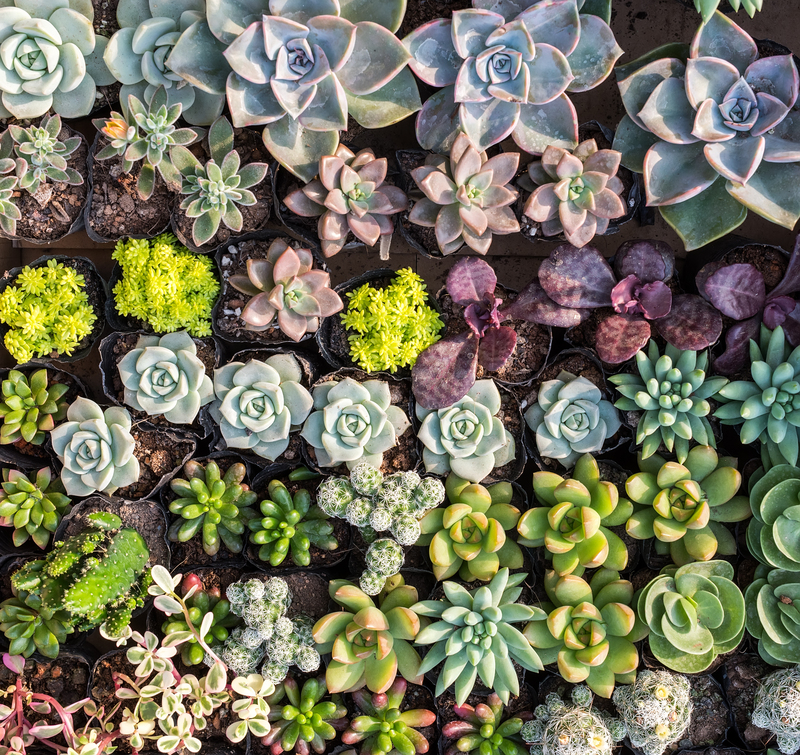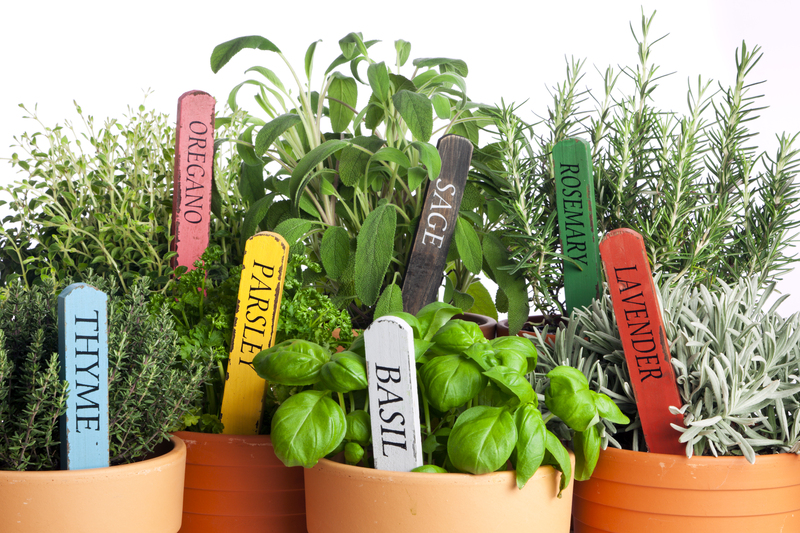Dog-Safe Plants and Landscaping Techniques
Posted on 28/05/2025
Dog-Safe Plants and Landscaping Techniques: Creating a Pet-Friendly Garden
Are you a dog owner with a passion for gardening? If so, you may have wondered how to create a beautiful outdoor space that's also safe for your furry friend. Many common garden plants and landscaping features can pose risks to dogs, so it's important to make informed choices. In this comprehensive guide, we'll explore dog-safe plants, smart landscaping techniques, and tips for designing a landscape that is both attractive and secure for pets.

Why Prioritize Dog-Safe Landscaping?
Dogs are naturally curious creatures. They love to sniff, dig, and sometimes chew on plants or other objects in your yard. Unfortunately, many popular plants -- such as azaleas, oleander, and sago palm -- are toxic to dogs and can cause severe health issues if ingested.
- According to the ASPCA, thousands of pets suffer from plant-related poisoning each year.
- Choosing dog-friendly plants reduces the risk of accidental poisoning.
- Dog-safe landscaping techniques can also help prevent injuries from thorns, sharp edges, or toxic mulches.
By selecting the right plants and using dog-safe landscaping strategies, you can enjoy a lush, attractive garden without putting your four-legged family members in harm's way.
Best Dog-Safe Plants for Your Yard
When designing a pet-friendly landscape, choose plants that are non-toxic and resilient. Below, we'll recommend a variety of options for sun, shade, borders, and groundcovers.
Dog-Safe Flowering Plants
- Sunflowers (Helianthus annuus): Bright, cheery, and non-toxic for dogs. Plus, they attract beneficial pollinators.
- Snapdragons: These colorful blooms are safe for pets and available in a wide range of colors.
- Marigolds (Tagetes): Not only do marigolds brighten up the garden, they help repel unwanted pests, and are considered non-toxic to dogs.
- Bee Balm: This vibrant native plant is safe for pets and great for attracting hummingbirds and butterflies.
Dog-Friendly Groundcovers
- Creeping Thyme: An aromatic, low-maintenance herb perfect for pathways. It's safe for pets and withstands heavy paw traffic.
- Elfin Creeping Thyme: A smaller variation that forms a living carpet and is gentle on sensitive paws.
- Clover: White clover is non-toxic and can be mixed with grass to create resilient dog-friendly lawns.
Dog-Safe Shrubs and Bushes
- Camellias: Their glossy evergreen leaves and elegant blooms offer beauty without toxic risks.
- Magnolia Bushes: Safe for pets and perfect for adding structure and privacy to your landscape.
- Rosemary: Both a culinary herb and a handsome shrub, rosemary tolerates rough play and is completely non-toxic to dogs.
Tough, Non-Toxic Grasses
- Bermuda Grass: Extremely durable and pet-friendly.
- Buffalo Grass: Native to North America and highly resistant to drought, this grass is excellent for dog zones.
- Fescue: A soft, cool-season grass that's gentle on paws and free from dangerous toxins.
Safe Indoor and Container Plants for Dog Owners
- Spider Plant (Chlorophytum comosum): Thrives indoors and isn't harmful if nibbled by your pup.
- Bamboo Palm: Adds a tropical vibe to patios or interiors without posing a toxic threat.
- Boston Fern: With lush, arching fronds, this plant is ideal for shady spots and safe for pets.
Plants to Avoid for a Pet-Friendly Landscape
For every safe plant, there are unfortunately several that present health hazards to dogs. Be sure to avoid these common garden plants:
- Sago Palm
- Oleander
- Azalea and Rhododendron
- Foxglove
- Daffodils and other bulbs
- Lily of the Valley
- Hydrangea
- Wisteria
- Cyclamen
- Ivy
- Aloe Vera (despite its benefits for humans, it's not safe for dogs)
If you're unsure whether a plant is safe, check the comprehensive ASPCA Toxic and Non-Toxic Plants List.
Dog-Safe Landscaping Techniques and Outdoor Design Tips
Beyond selecting non-toxic plants, there are practical landscaping techniques to make your yard safer and more enjoyable for dogs.
Create Dog Paths and Play Zones
- Design dedicated paths where your dog can run without trampling delicate plants. Use mulch, pea gravel, or flagstones that are gentle on paws.
- Dog play areas with sturdy grass, agility equipment, or dig zones reduce boredom and keep pets entertained.
- Consider a sandbox or dirt patch if your dog loves to dig, keeping other garden beds protected.
Choose Safe Mulching Materials
- Avoid cocoa mulch, as it contains theobromine (the same toxin as in chocolate) and is highly poisonous to dogs.
- Opt for pine, cedar, or hemlock mulches, which are generally considered non-toxic for pets.
- Double-check any wood mulch for mold or sharp edges.
Use Fencing and Plant Barriers
- Secure fencing prevents escape and keeps dogs away from off-limit areas like compost heaps or vegetable gardens.
- Raised beds or ornamental edging can protect more delicate or newly planted areas from curious paws.
- Try living fences with dog-safe hedges such as boxwood or privet.
Design for Shade and Shelter
- Integrate shade trees or structures (like pergolas or doghouses) to protect dogs from sun and heat, reducing the risk of heatstroke.
- Choose non-toxic trees such as crape myrtle or magnolia.
Smart Irrigation and Water Features
- Install pet-safe water features, such as fountains with shallow basins or splash zones, so dogs can cool off safely.
- Keep ponds secured or covered if you have small dogs, and avoid plants with toxic leaves around the water's edge.
Maintaining a Dog-Friendly Garden: Essential Safety Tips
To keep your garden both beautiful and safe for dogs, regular maintenance and observation are key.
- Inspect plants regularly for signs of chew damage or disease. Remove any wilting or dropped petals, fruits, or leaves that could attract curious pups.
- Avoid chemical pesticides or herbicides that could be ingested and opt for natural solutions like neem oil or diatomaceous earth.
- Keep compost piles secure -- certain food scraps can be hazardous to dogs.
- Supervise playtime in the garden, especially if you're introducing a new puppy to your yard.
Dog Landscaping Solutions for Special Behaviors
Managing Digging Dogs
- Provide a special dig zone or sandbox, placing some of your dog's favorite toys in the designated area.
- Cover garden beds with landscape fabric or flat stones until plants are established.
- Edge garden beds with robust borders, such as brick or metal edging, to discourage digging.
Coping With Heavy Traffic Areas
- Install stepping stones where dogs run most frequently, helping protect your lawn and reduce muddy paws.
- Choose tough groundcovers that tolerate trampling, such as creeping thyme or buffalo grass.
- Rotate play areas to prevent worn-out patches in the lawn.
Dog-Safe DIY Landscaping Features
Get creative with these dog-safe landscaping ideas and add personality to your pet-friendly backyard.
- Custom agility courses: Use tunnels, hurdles, and ramps made of pet-safe materials for training and enrichment.
- Pet water stations: Set up low, shaded water bowls or fountains for constant hydration.
- Paw-friendly patios: Pave with cool-to-touch materials like flagstone, pea gravel, or turf; avoid surfaces that absorb excess heat.
- Dog lookout mounds: Small, gently sloping hills provide a fun vantage point for curious pups and add visual interest to the landscape.
How to Introduce New Plants to Your Dog-Safe Landscape
- Research plant safety thoroughly before purchasing -- double-check with reputable sources such as the ASPCA, Pet Poison Helpline, or your veterinarian.
- Acclimate plants in pots first, allowing your dog to get used to them without planting directly in the ground right away.
- Supervise your pet's first encounters with new plants to observe any tendency to chew or dig.
- Gradually transition safe plants into the landscape, keeping an eye on your dog's behavior.
Key Takeaways: Building the Ultimate Dog-Safe Outdoor Space
- Choose non-toxic, durable plants and grasses for all landscaped areas.
- Avoid common toxic plants and unsafe mulching materials.
- Create dedicated play zones, paths, and relaxing spots to keep both you and your pup happy.
- Maintain safety through regular inspection, natural lawn care, and smart fencing or barriers.
- Always supervise your dog in the garden, especially when introducing new plants or features.
With careful planning and a little creativity, you can enjoy a lush, inviting landscape that brings joy to both you and your beloved pet. Focus on dog-safe landscaping techniques and pet-friendly plant choices for a stress-free, harmonious backyard environment.

Frequently Asked Questions about Dog-Safe Landscaping
How can I tell if a plant is safe for my dog?
Consult reputable sources such as the ASPCA, local cooperative extensions, or your veterinarian before introducing any new plant to your dog's environment. When in doubt, avoid plants with strong fragrances, milky sap, or brightly colored berries, which are often indicators of toxicity.
What can I do if my dog eats a toxic plant?
Contact your veterinarian or the Animal Poison Control Center immediately. Bring a sample of the plant to help identify the toxin. Early intervention saves lives!
Are there any pet-safe alternatives to traditional pesticides and fertilizers?
Yes! Use natural lawn care products such as compost, fish emulsion, or neem oil. These are safer for pets and healthier for your soil.
Conclusion: The Joy of Dog-Safe Gardening
Creating a dog-friendly garden is truly rewarding. By incorporating dog-safe plants and thoughtfully applied landscaping techniques, you'll build a thriving outdoor space where your pets can play, explore, and relax safely. With the right information and a little planning, both you and your canine companion will enjoy every season in your verdant, happy backyard.
Happy gardening--and tail wagging!

